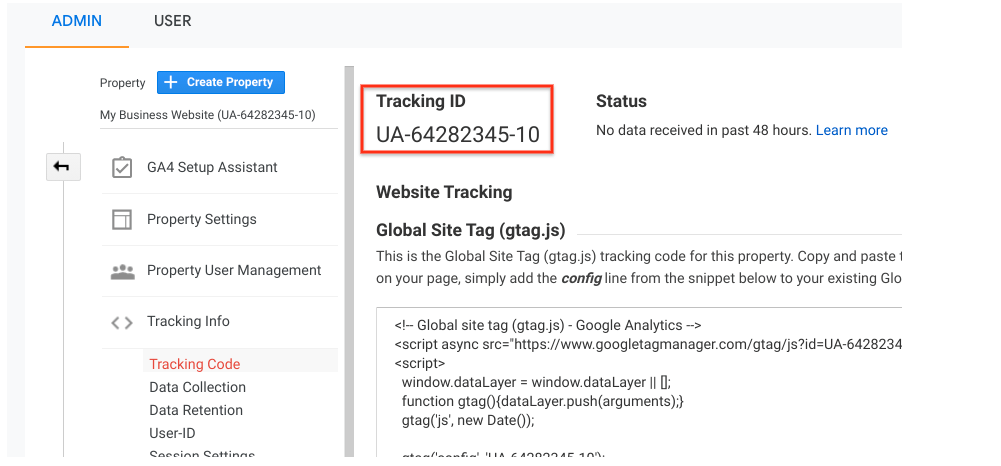Opening Insights: Recognizing What Data Does Google Analytics Prohibit Collecting
Opening Insights: Recognizing What Data Does Google Analytics Prohibit Collecting
Blog Article
Recognizing the Ins and Outs of Data Collection Limitations in Google Analytics to Boost Your Insights
Navigating the landscape of information collection within Google Analytics unveils a myriad of complexities that can dramatically impact the insights stemmed from your electronic analytics. As companies significantly rely upon data-driven decision-making, comprehending the constraints and subtleties of information collection becomes extremely important. From data tasting in records to the obstacles posed by cross-domain tracking and the increase of ad blockers, each variable adds layers of complexity to the accuracy and depth of the data at hand. The genuine intrigue exists in just how these limitations can be not only acknowledged however purposefully maneuvered to elevate the quality and integrity of the understandings you remove from your analytics initiatives.
Information Sampling in Reports
When assessing information in Google Analytics, one important aspect to take into consideration is the visibility of data tasting in reports, which can influence the precision and integrity of understandings derived from the information. Data tasting is a method used to examine a subset of information as opposed to the full dataset. In Google Analytics, when the volume of data goes beyond a particular limit, the platform might turn to sampling to quicken report generation. While tasting can be useful in minimizing processing time for large datasets, it can also present inaccuracies in the understandings supplied.
The ramifications of information sampling can be considerable, especially when making essential company decisions based on the analytics data. Sampling can lead to skewed results and false impressions, specifically in analyses requiring a granular sight of customer habits or efficiency metrics. To minimize the impact of data sampling, it is vital to recognize when sampling occurs, keep track of the sampling rate in reports, and consider purchasing Google Analytics 360, which uses greater handling restrictions to lower the demand for tasting. By knowing data sampling in reports, analysts can make more educated decisions based on accurate data insights.
Cross-Domain Tracking Obstacles
Cross-domain monitoring provides a complex collection of difficulties that can impact the precision and dependability of data gathering in Google Analytics. Without correct setup, Google Analytics may interpret these communications as separate sessions, leading to information fragmentation and unreliable understandings.
In addition, cross-domain tracking requires thorough arrangement entailing modifications to tracking codes and configurations across all domains involved. Failing to apply these changes appropriately can result in data inconsistencies and incomplete monitoring, impeding the ability to comprehend customer habits perfectly throughout domain names. Furthermore, obstacles can emerge when taking care of third-party devices or platforms that may not totally sustain cross-domain tracking, further complicating the information assimilation procedure. Conquering these challenges needs complete planning, precise implementation, and continuous tracking to ensure data precision and obtain purposeful understandings throughout domains in Google Analytics.
Impact of Ad Blockers
The frequency of advertisement blockers positions significant obstacles to data collection precision in Google Analytics. These devices not only obstruct promotions however can also interfere with the monitoring codes utilized by Google Analytics to collect information.

To minimize the influence of advertisement blockers on data collection, site owners can explore different monitoring techniques, such as server-side monitoring or applying consent management tools to encourage users Source to disable ad blockers on their sites. By proactively resolving the difficulties postured by ad blockers, organizations can improve the accuracy of their data collection in Google Analytics and enhance their overall understanding of user behavior.

Cookie Deletion Impacts
Occasionally, cookie removal can impact the integrity of data accumulated by Google Analytics, affecting the precision of website web traffic analysis. When individuals remove cookies, it can interrupt the monitoring process, leading to spaces in information collection. To reduce the results of cookie deletion, it is necessary to complement cookie-based information with various other tracking techniques, such as server-side monitoring or integrating first-party information resources, to guarantee an extra extensive understanding of customer behavior.
Data Personal Privacy Regulations
In light of enhancing issues surrounding data privacy and protection, businesses making use of Google Analytics have to stick to strict data personal privacy laws to make certain conformity and protect customer info. GDPR mandates that businesses acquire explicit consent from customers before accumulating and refining their personal information.
In Addition To GDPR, there are various other data privacy laws like the California Customer Privacy Act (CCPA) and the ePrivacy Directive that organizations need to consider when making use of Google Analytics. These guidelines intend to safeguard customer information and offer individuals much more control over exactly how their info is gathered and utilized. By comprehending and complying with these information privacy regulations, businesses can build trust with their users and demonstrate a commitment to data security and personal privacy.
Verdict
To conclude, recognizing the constraints of data collection in Google Analytics is important for enhancing insights. Data tasting in reports, cross-domain tracking difficulties, the impact of advertisement blockers, cookie removal impacts, and data privacy laws all contribute in the precision and completeness of the data accumulated. By recognizing these limitations and locating means to reduce them, companies can guarantee they are making notified decisions based upon reputable information.
When analyzing data in Google Analytics, one important facet to consider is the presence of data sampling in reports, which can influence view the accuracy and dependability of understandings acquired from the information. To minimize the impacts of cookie deletion, it is vital to match cookie-based data with various other tracking methods, such as server-side tracking or integrating first-party data sources, to make certain a more thorough understanding of individual actions.

Information tasting in reports, cross-domain monitoring obstacles, the impact of ad blockers, cookie deletion impacts, and information privacy regulations all play a role in the accuracy and completeness of the data gathered.
Report this page